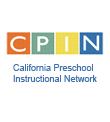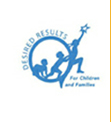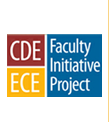Home | Additional Resources | Books, Guides and Articles
Books, Guides, and Articles
Ballantyne, K. G., Sanderman, A.R. & McLaughlin, N. (2008). Dual language learners in the early years: Getting ready to succeed. National Clearinghouse on English Language Acquisition
Baker, C. (2000). A parents’ and teachers’ guide to bilingualism (2nd Ed.). Clevedon, UK: Multilingual Matters Ltd.
Baker, C. (2000). The care and education of young bilinguals: An introduction for professionals. Clevedon, England: Multilingual Matters.
Castro, D.C., Ayankoya, B. & Kasprzak, C. (2012). The new voices nuevas voces:Guide to cultural and linguistic diversity in early childhood. Baltimore, MD: Brookes Publishing, Inc.
Collins, M. F. (n.d). Less is less: How we underestimate preschoolers’ vocabulary and comprehension skills.
Derman-Sparks, L., & Edwards, J.O. (2010). The anti-bias educationfor young children and ourselves. Washington, DC: National Association for the Education of Young Children.
Durgunoglu, A.Y., & Oney, B. (2000). Literacy development in two languages: Cognitive and sociocultural dimensions of cross-language transfer. US Department of Education, Office of Bilingual Education and Minority Language Affairs (OBEMLA), Reading Research Symposium, Washington, DC.
Eggers-Piérola, C. (2005). Connections and commitments /Conexión y compromiso:
Reflecting Latino values in early childhood programs. Portsmouth, NH: Heinemann
Espinosa, L.M. (2010). Getting it right for young children from diverse backgrounds: Applying research to improve practices. Washington, DC: National Association for the Education of Young Children.
Espinosa, L. & Burns, M. S. (2003). Early Literacy for Young Children and English Language Learners. In Howes, C., (Ed.) Teaching 4- to 8- year olds: Literacy, math, multiculturalism, and classroom community (pp. 47 – 69). Baltimore, MD: Brookes Publishing.
Espinosa, L.M. & Lopez, M. L. (2007). Assessment considerations for young English language learners across different levels of accountability: A report prepared for The National Early Childhood Accountability Task Force and First 5LA.
Garcia, E.E. & Frede, E.C. (2010). Young English language learners: Current research and emerging directions for practice and policy. NY: Teachers’ College Press.
Genishi, C. (2002). Young English Language Learners: Resourceful in the Classroom. Young children 57 (4).
Gillanders, C. & Castro, D.C. (2012). Storybook Reading for Young Dual Language Learners. Young children 66 (1) pp. 91-94.
Gonzalez-Mena, J. (2007). 50 Early childhood strategies for working and communicating with diverse families. Upper Saddle River, NJ: Pearson.
Howes, C., Downer, J.T., Pianta, R. C. (2012). Dual language learners in the early childhood classroom. Baltimore, MD: Brookes Publishing, Inc.
Jiménez, R., García, G. E. & Pearson, D. (1995). Three children, two languages and strategic reading: Case studies in bilingual/monolingual reading. American Education Research Journal, 32, 31- 61.
Lanauze, M., & Snow, C. E. (1989). The relation between first- and second-language skills. Evidence from Puerto Rican elementary school children in bilingual programs. Linguistics and Education, 1, 323-340.
Lukens, R. J. (1990). A critical handbook to children's literature (4th ed.). New York: Harper Collins.
Morrow, L. & Gambrell, L. (2004). Using children’s literature in preschool: comprehending and enjoying books. Newark, DE: International Reading Association.
Nemeth, K.N. (2009). Many languages, one classroom: Teaching dual and English language learners. Beltsville, MD: Gryphon House, Inc.
Olsen, L., Bhattacharya, J., Chow, M., Dowell, C., Jaramillo, A., Pulido-Tobiassen, D. (Eds.). & Solorio, J. (2001). And still we speak… Stories of communities sustaining and reclaiming language and culture. Oakland, CA: California Tomorrow.
Ordonez-Jasis, R. & Ortiz, R.W. (2007). Reading Their Worlds: Working with Diverse Families to Enhance Children’s Early Literacy Development. In D. Koralek (Ed.) A spotlight on young children and families. Washington, DC: National Association for the education of young children.
Paradis, J., Genesee, F. and Crago, M. B. (2010). Dual language development and disorders: A handbook on bilingualism and second language learning (2nd Ed.). Baltimore, MD: Brookes Publishing.
Sundem, G., Krieger, J., Pikiewicz, K. (2009). 10 languages you’ll need most in the classroom. Red Leaf Press.
Tabors, P. (2008). One child, two languages: A guide for preschool educators of children learning English as a second language (2nd Ed.). Baltimore, MD: Paul Brookes Publishing Co.
Tabors, P.O., (2002). Language and Literacy for ALL Children. Head Start Bulletin 74.
Thomas, W.P., & Collier, V.P. (2003). The Multiple Benefits of Dual Language. Educational Leadership, 61(2), 61-64.
Valdés, G. (1996). Con respeto: Bridging the distances between culturally diverse families and schools; An ethnographic portrait. New York, NY: Teachers College Press.
Winsler, A., Díaz, R., Espinosa, L., & Rodriguez, J. (1999). When Learning a Second Language Does Not Mean Losing the First: Bilingual Language Development in Low-Income, Spanish-Speaking Children Attending Bilingual Preschool: Child Development 70 (2), 349-362.
Nuguyen-Phan, K., (1994). Vietnamese word book. Honolulu, Hawaii:
The Bess Press, Inc.
Snakenberg, L., (1983). Hawaiian word book. Honolulu, Hawaii: The Bess Press, Inc.
Worline, S. (2006). Lots of languages: Phrasebook and reference guide. New York: Infini Press, LLC
Zero to Three (2008). Dual language learners in early care and education settings: Practical tips and tools.




